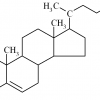Archive for April, 2012

Jumping genes in your brain?
Apr 26th
Mobile chunks of DNA that walk their way from one position in the genome to another may affect neurological diseases and could have subtle influences on normal brain function and behavior, according to a recent study in Nature.
Alu is an example of a so-called “jumping gene” – a transposable DNA sequence that “reproduces” by copying itself and inserting into new locations throughout the genome. Alu elements are classified as SINEs, or Short INterspersed Elements. All Alus are approximately 300 bp in length and derive their name from a single recognition site for the restriction enzyme AluI located near the middle of the Alu More >

Bad Cholesterol
Apr 12th
When someone mentions cholesterol many will say, how is your HDL? Cholesterol travels through the blood attached to lipoproteins. From a health prospective we try to maintain the good cholesterol (High density lipoproteins or HDL) and decrease the bad cholesterol (Low density lipoproteins or LDL). The HDL aids the body in removal of bad cholesterol in the blood whereas LDL causes build up of plaque within arteries restricting blood flow and hardening of the arteries that may result in heart disease. Control of cholesterol levels is through a number of ways such as low cholesterol diets, weight loss and drugs.
Cholesterol More >

Multiple Paths to Autism
Apr 10th
There was a great deal of excitement last week as intriguing findings published in Nature yield clues into the mystery of autism. Autism, or more correctly put Autism Spectrum Disorders (ASD) are defects in neural development that manifest themselves early in childhood as affected children have difficulties in socialization and language skills. Like any childhood disease autism is unimaginably frustrating for the millions of parents and relatives that have to find the best way to cope with a child who will have unexpected needs. Even more frustrating perhaps is the unanswered questions surrounding the cause of the disease and the More >

Blood
Apr 9th
Within the human body we have 60,000 miles of blood vessels. We have three types of cells in the blood, red, white, and platelets. Red blood cells transport oxygen throughout the body while white blood cells help protect us against infection. Platelets are involved in clotting. When you get a cut your vessels send out signals calling for for platelets and proteins to help in clotting. In addition, white blood cells also come to the rescue. A blood clot is a group of chemicals and cells that work together to stop the flow of blood in a small area. All More >

Finding Cancer: Can you hear the light?
Apr 4th
Finding cancers early allows for more effective treatment with the least side effects, so finding better ways to detect cancers is an important part of the fight. A new technique may help us “hear” where cancers are, allowing doctors to diagnose cancers more precisely than is currently possible. The technique, which is called photoacoustic tomography, takes pictures of sound waves that come from tissues when laser light is shined on the tissue. This is possible because different parts of the body absorb different amounts of light. When light is absorbed, it raises the temperature of the tissue, and the temperature More >

